-
 Bitcoin
Bitcoin $108,489.6704
1.13% -
 Ethereum
Ethereum $2,502.0528
2.92% -
 Tether USDt
Tether USDt $1.0002
0.00% -
 XRP
XRP $2.1941
0.51% -
 BNB
BNB $655.3375
1.00% -
 Solana
Solana $151.5977
1.27% -
 USDC
USDC $0.9999
0.00% -
 TRON
TRON $0.2768
0.32% -
 Dogecoin
Dogecoin $0.1676
2.86% -
 Cardano
Cardano $0.5675
0.98% -
 Hyperliquid
Hyperliquid $40.6109
7.48% -
 Bitcoin Cash
Bitcoin Cash $500.7746
2.09% -
 Sui
Sui $2.8328
2.03% -
 Chainlink
Chainlink $13.4452
1.26% -
 UNUS SED LEO
UNUS SED LEO $9.1623
0.39% -
 Avalanche
Avalanche $18.2267
2.24% -
 Stellar
Stellar $0.2382
0.00% -
 Toncoin
Toncoin $2.8885
1.68% -
 Shiba Inu
Shiba Inu $0.0...01159
0.91% -
 Litecoin
Litecoin $87.1827
0.88% -
 Hedera
Hedera $0.1511
2.90% -
 Monero
Monero $315.4992
-0.59% -
 Polkadot
Polkadot $3.4663
2.34% -
 Bitget Token
Bitget Token $4.6118
-0.65% -
 Dai
Dai $1.0000
-0.01% -
 Ethena USDe
Ethena USDe $1.0003
0.02% -
 Uniswap
Uniswap $7.2989
4.69% -
 Pepe
Pepe $0.0...01003
5.73% -
 Aave
Aave $275.5616
7.15% -
 Pi
Pi $0.5181
-2.49%
Is the 30-week moving average with a reduced volume a mid-term buying point?
A declining volume near the 30-week moving average may signal reduced selling pressure, offering a potential mid-term buying opportunity in crypto when confirmed by price action and increasing volume.
Jun 30, 2025 at 08:01 pm
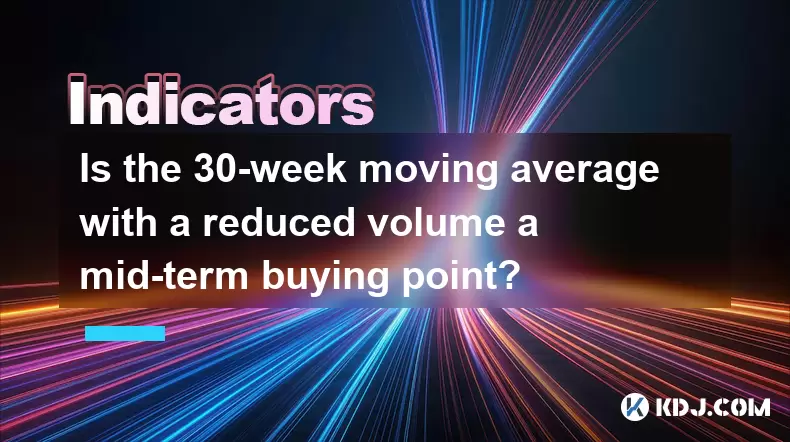
Understanding the 30-Week Moving Average in Cryptocurrency Trading
The 30-week moving average is a popular technical indicator used by traders to assess long-term trends in cryptocurrency markets. Unlike shorter timeframes such as the 50-day or 200-day moving averages, the 30-week version smooths out price data over a longer duration, reducing noise and offering clearer insights into trend direction. This makes it especially valuable for identifying potential mid-term buying points, particularly when combined with volume analysis.
Moving averages are calculated by averaging the closing prices of an asset over a set period—in this case, 30 weeks. When the price of a cryptocurrency crosses above its 30-week moving average after a downtrend, it can signal a shift in momentum.
Volume Reduction and Its Significance
Volume plays a crucial role in confirming price movements. A decline in trading volume during a price drop suggests that selling pressure is waning. This phenomenon—known as volume contraction—can indicate that a downtrend is losing strength and a reversal may be imminent.
- Reduced volume during a bearish phase implies fewer sellers are willing to offload their holdings at current prices.
- This often precedes accumulation by institutional investors or large holders who buy quietly without driving up the price too quickly.
- Traders should look for a subsequent increase in volume when the price starts to rise, which confirms that demand is returning.
Combining 30-Week MA and Volume Analysis
When both the 30-week moving average and volume reduction align, they can offer a powerful signal for mid-term entry points. Here’s how to interpret this confluence:
- If the price stabilizes near or slightly below the 30-week MA while volume contracts, it may suggest that the market is finding a floor.
- A bounce from this area, accompanied by increasing volume, can confirm that buyers have taken control.
- It's important to monitor how the price reacts around the 30-week MA line—if it holds as support multiple times, it strengthens the validity of the level.
This combination works best in trending markets, where pullbacks are seen as healthy corrections rather than trend reversals. It is less effective in choppy or sideways markets where volume patterns are less reliable.
Practical Steps to Identify Mid-Term Buying Opportunities
To apply this strategy effectively in crypto trading, follow these detailed steps:
- Plot the 30-week exponential moving average (EMA) on your weekly chart. Some traders prefer EMA over SMA due to its sensitivity to recent price action.
- Look for instances where the price approaches or touches the 30-week MA after a significant downtrend.
- Analyze the volume bars or histogram during the approach. If volume steadily declines as the price nears the MA, it could indicate reduced selling pressure.
- Watch for a bullish candlestick pattern or a strong close above the MA as confirmation of support holding.
- Wait for the next week’s volume to expand positively, signaling renewed interest from buyers before entering a position.
Use additional tools like RSI or MACD to filter false signals. For example, if RSI is oversold (<30) and begins to turn upward, it adds confluence to the setup.
Risks and Considerations in Crypto Markets
While the 30-week MA with reduced volume offers promising signals, crypto markets are inherently volatile and unpredictable. Several risks must be considered:
- Whale manipulation can distort volume and price behavior, creating false breakouts or breakdowns.
- Regulatory news or macroeconomic events can override technical indicators, making historical patterns unreliable.
- Not all cryptocurrencies respond similarly to moving averages. Larger-cap coins like BTC and ETH tend to respect key MAs more than smaller altcoins.
Therefore, it’s essential to use stop-loss orders and proper position sizing to protect against sudden volatility spikes or unexpected market shifts.
Frequently Asked Questions
What time frame should I use to analyze the 30-week moving average?
The ideal time frame for analyzing the 30-week moving average is the weekly chart. This ensures you’re capturing long-term trends and filtering out short-term noise.
Can this strategy be applied to altcoins?
Yes, but with caution. While major altcoins like ETH or SOL may show good alignment with the 30-week MA, many smaller altcoins lack sufficient liquidity and historical data, making the signal less reliable.
Is reduced volume always a sign of a potential reversal?
No, not necessarily. In some cases, reduced volume may indicate continued apathy or a prolonged downtrend. It must be confirmed with other technical signals or price action.
How do I differentiate between genuine volume contraction and low liquidity?
Genuine volume contraction typically occurs after a sustained move and shows decreasing volume bars alongside a slowing price decline. Low liquidity, on the other hand, results in erratic volume patterns and wide spreads even during normal market conditions.
Disclaimer:info@kdj.com
The information provided is not trading advice. kdj.com does not assume any responsibility for any investments made based on the information provided in this article. Cryptocurrencies are highly volatile and it is highly recommended that you invest with caution after thorough research!
If you believe that the content used on this website infringes your copyright, please contact us immediately (info@kdj.com) and we will delete it promptly.
- Unlock Crypto Riches: Mining Platforms & Starter Bonuses - Your Gateway to Digital Gold!
- 2025-06-30 22:30:11
- Dogecoin, Cloud Mining, and Risk Alerts: Navigating the Meme Minefield
- 2025-06-30 22:30:11
- Ric Edelman's Bold Crypto Allocation: A Financial Advisor's Perspective
- 2025-06-30 22:50:12
- Bitcoin Layer-2 Presale Heats Up: Is HYPER the Next Big Thing?
- 2025-06-30 22:50:12
- Bitcoin's Bull Run: Network Activity Tells a Different Story
- 2025-06-30 22:55:12
- SpacePay, Altcoins & Investing in 2025: What's the Buzz?
- 2025-06-30 23:10:12
Related knowledge
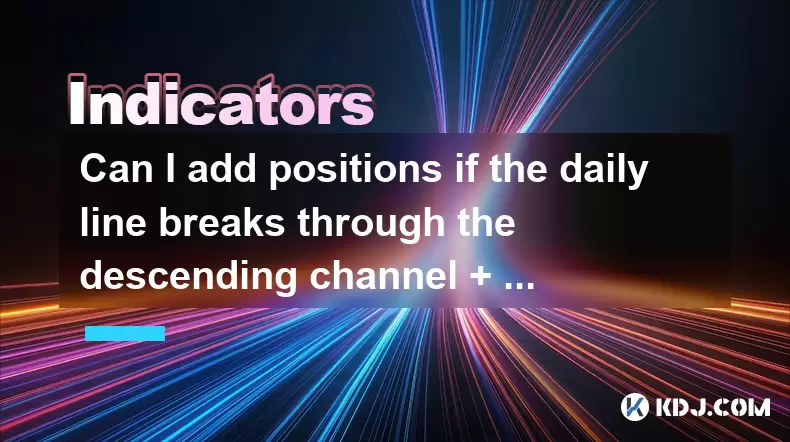
Can I add positions if the daily line breaks through the descending channel + the 30-minute moving average is in a bullish arrangement?
Jun 30,2025 at 11:00pm
Understanding the Descending Channel BreakoutWhen a daily line breaks through a descending channel, it indicates a potential shift in market sentiment from bearish to bullish. A descending channel is formed by drawing two parallel trendlines, where the upper trendline connects the lower highs and the lower trendline connects the lower lows. A breakout o...
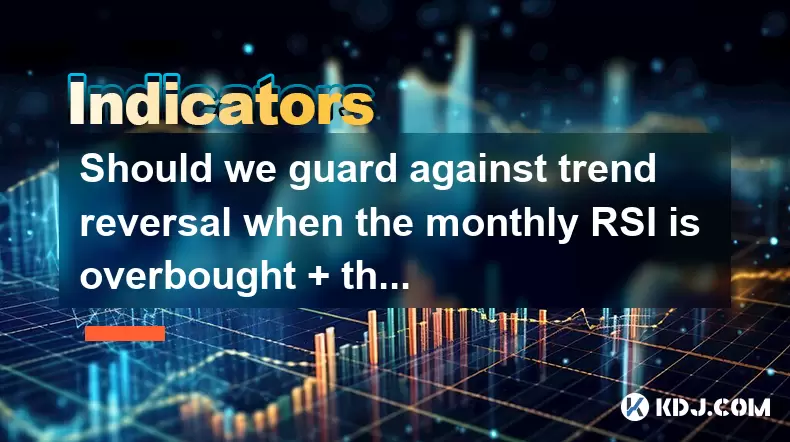
Should we guard against trend reversal when the monthly RSI is overbought + the weekly line has a long upper shadow?
Jun 30,2025 at 11:35pm
Understanding RSI Overbought Conditions in CryptocurrencyThe Relative Strength Index (RSI) is a momentum oscillator commonly used in technical analysis to identify overbought or oversold conditions in an asset. When the monthly RSI of a cryptocurrency reaches above 70, it is generally considered overbought, suggesting that the asset may be due for a pul...
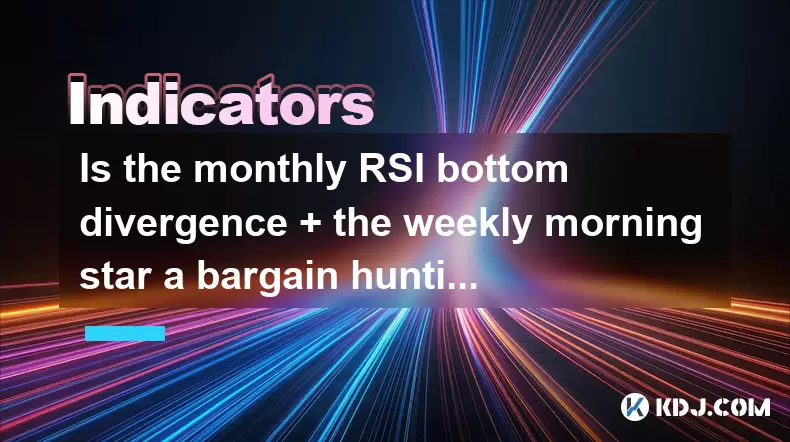
Is the monthly RSI bottom divergence + the weekly morning star a bargain hunting opportunity?
Jun 30,2025 at 09:57pm
Understanding RSI Bottom Divergence in Monthly TimeframesThe Relative Strength Index (RSI) is a momentum oscillator commonly used to identify overbought or oversold conditions in the market. When traders refer to a monthly RSI bottom divergence, they're observing a situation where the price makes a lower low, but the RSI makes a higher low on the monthl...
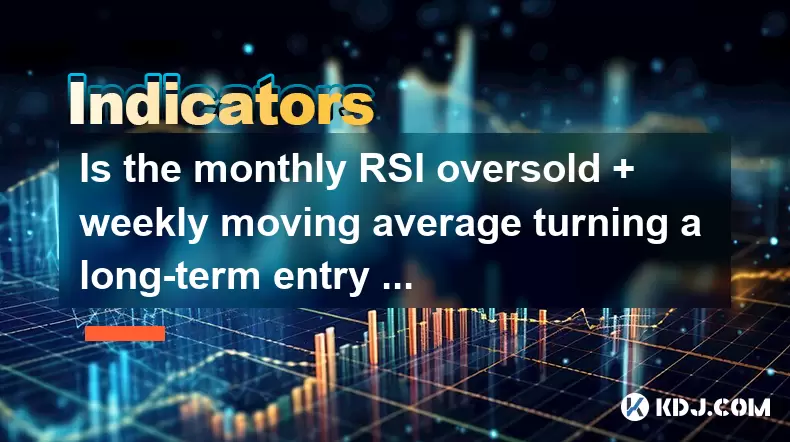
Is the monthly RSI oversold + weekly moving average turning a long-term entry signal?
Jun 30,2025 at 11:42pm
Understanding RSI and Its Role in Cryptocurrency TradingThe Relative Strength Index (RSI) is a momentum oscillator commonly used by traders to identify overbought or oversold conditions in the market. In the context of cryptocurrency, where volatility reigns supreme, understanding how RSI behaves on different timeframes becomes crucial. When the monthly...
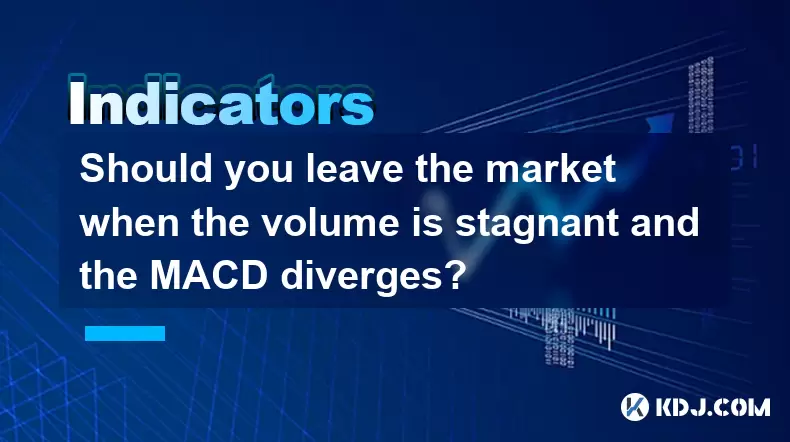
Should you leave the market when the volume is stagnant and the MACD diverges?
Jun 30,2025 at 09:36pm
Understanding Volume Stagnation in Cryptocurrency TradingIn the realm of cryptocurrency trading, volume plays a crucial role in determining the strength of price movements. When volume remains stagnant over an extended period, it suggests that neither buyers nor sellers are showing strong conviction. This often leads to sideways movement or consolidatio...
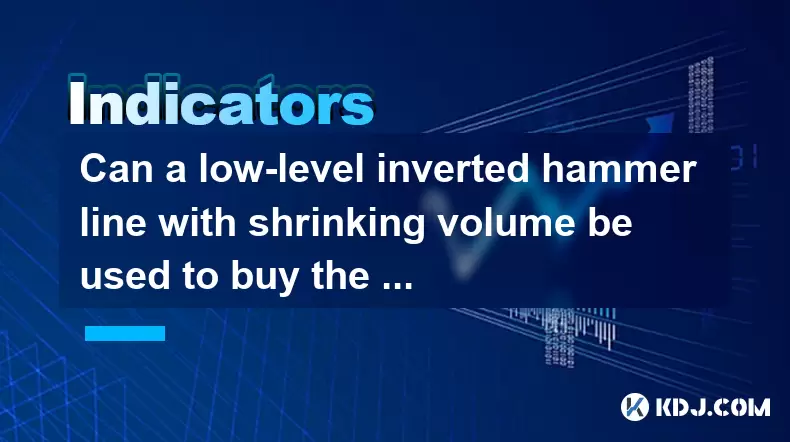
Can a low-level inverted hammer line with shrinking volume be used to buy the bottom?
Jul 01,2025 at 12:08am
Understanding the Low-Level Inverted Hammer LineA low-level inverted hammer line is a candlestick pattern that typically appears at the bottom of a downtrend. It consists of a small real body near the top of the trading range with a long upper shadow and little or no lower shadow. This formation suggests that buyers attempted to push prices higher but w...

Can I add positions if the daily line breaks through the descending channel + the 30-minute moving average is in a bullish arrangement?
Jun 30,2025 at 11:00pm
Understanding the Descending Channel BreakoutWhen a daily line breaks through a descending channel, it indicates a potential shift in market sentiment from bearish to bullish. A descending channel is formed by drawing two parallel trendlines, where the upper trendline connects the lower highs and the lower trendline connects the lower lows. A breakout o...

Should we guard against trend reversal when the monthly RSI is overbought + the weekly line has a long upper shadow?
Jun 30,2025 at 11:35pm
Understanding RSI Overbought Conditions in CryptocurrencyThe Relative Strength Index (RSI) is a momentum oscillator commonly used in technical analysis to identify overbought or oversold conditions in an asset. When the monthly RSI of a cryptocurrency reaches above 70, it is generally considered overbought, suggesting that the asset may be due for a pul...

Is the monthly RSI bottom divergence + the weekly morning star a bargain hunting opportunity?
Jun 30,2025 at 09:57pm
Understanding RSI Bottom Divergence in Monthly TimeframesThe Relative Strength Index (RSI) is a momentum oscillator commonly used to identify overbought or oversold conditions in the market. When traders refer to a monthly RSI bottom divergence, they're observing a situation where the price makes a lower low, but the RSI makes a higher low on the monthl...

Is the monthly RSI oversold + weekly moving average turning a long-term entry signal?
Jun 30,2025 at 11:42pm
Understanding RSI and Its Role in Cryptocurrency TradingThe Relative Strength Index (RSI) is a momentum oscillator commonly used by traders to identify overbought or oversold conditions in the market. In the context of cryptocurrency, where volatility reigns supreme, understanding how RSI behaves on different timeframes becomes crucial. When the monthly...

Should you leave the market when the volume is stagnant and the MACD diverges?
Jun 30,2025 at 09:36pm
Understanding Volume Stagnation in Cryptocurrency TradingIn the realm of cryptocurrency trading, volume plays a crucial role in determining the strength of price movements. When volume remains stagnant over an extended period, it suggests that neither buyers nor sellers are showing strong conviction. This often leads to sideways movement or consolidatio...

Can a low-level inverted hammer line with shrinking volume be used to buy the bottom?
Jul 01,2025 at 12:08am
Understanding the Low-Level Inverted Hammer LineA low-level inverted hammer line is a candlestick pattern that typically appears at the bottom of a downtrend. It consists of a small real body near the top of the trading range with a long upper shadow and little or no lower shadow. This formation suggests that buyers attempted to push prices higher but w...
See all articles

























































































